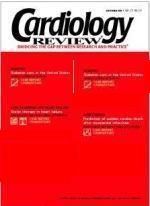Publication
Article
Cardiology Review® Online
Largest study of rimonabant: Improvements of CV risk factors maintained at 2 years
NEW ORLEANS—Rimonabant maintains its efficacy for 2 years in reducing weight and waist circumference and improving the metabolic syndrome in overweight patients with a comorbidity. New phase 3 data presented at the American Heart Association Scientific Sessions 2004 confirm findings from two other recently completed trials in which overweight or obese subjects with untreated dyslipidemia or with or without comorbidities had significant weight loss and improved lipid and glycemic profiles with rimonabant treatment.
“Patients treated with rimonabant, 20 mg, for 2 years experienced a reduction in body weight and in waist circumference, demonstrating a significant reduction in abdominal fat, a key marker for cardiovascular disease,” said the study’s principal investigator, F. Xavier Pi-Sunyer, MD, chief, division of endocrinology, St. Luke’s-Roosevelt Hospital Center, Columbia University, New York City. Over the 2-year period, patients treated with 20 mg/day “also achieved a significant increase in high-density lipoprotein (HDL) cholesterol, a reduction in triglycerides, and an improvement in insulin sensitivity.”
Rimonabant, 5 or 20 mg once daily, was compared with placebo in a randomized study of 3,040 patients with a body mass index (BMI) of 30 kg/m2 or more or a BMI greater than 27 kg/m2 with a comorbidity. All patients were prescribed a mildly hypocaloric diet (daily caloric intake reduced by 600 kcal).
Patients were randomly assigned to one of the three treatment groups for 52 weeks of double-blind treatment. After the first year, patients who received rimonabant were re-randomized to either the same dose of rimonabant or placebo for another 52 weeks.
Among the completers at 1 year, waist circumference was reduced by 3.9 cm in patients assigned to pla-cebo, 4.7 cm in patients assigned to
5 mg rimonabant, and 8.2 cm in those randomized to 20 mg rimonabant (P < .001 versus placebo). These differences were maintained at the 2-year follow-up.
Almost two thirds (62.5%) of patients who received rimonabant, 20 mg, for 2 years lost 5% or more of their initial body weight, compared with 36.7% of patients on rimonabant, 5 mg, and 33.2% of the placebo recipients (P < .001 for rimonabant, 20 mg, versus placebo). Nearly one third (32.8%) of patients treated with the higher dose of rimonabant lost more than 10% of their initial body weight compared with 20% of those taking the lower dose of rimonabant and 16.4% of those taking placebo (P < .001 for rimonabant, 20 mg, versus placebo). At 2 years, HDL cholesterol levels increased by 24.5%, 15.6%, and 13.8% in the 20-mg rimonabant, 5-mg rimonabant, and placebo groups, respectively (P < .001). Triglyceride levels were reduced by 9.9%, 5.9%, and 1.6% in patients assigned to 20 mg of rimonabant, 5 mg of rimonabant, and placebo, respectively (P < .05).
At baseline, 34.8% of patients assigned to the 20 mg rimonabant dose met diagnostic criteria for the metabolic syndrome, which was reduced to 22.5% at the end of 2 years of treatment (P < .001).
At 2 years, the percentage of patients with any serious adverse events or discontinuations due to adverse events was no different between the three groups, and no differences were observed between groups in scores on the Hospital Anxiety Depression scale, said Dr. Pi-Sunyer.
The study presented here is the largest of the rimonabant studies presented to date. Rimonabant works on the endocannabinoid system, which is believed to play a key role in the central and peripheral regulation of energy balance and glucose and lipid metabolism.
